Ca Mau Shipwreck Blue & White Complete Deshima FULL SET Very Rare
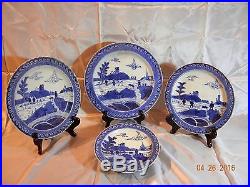
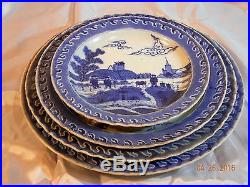
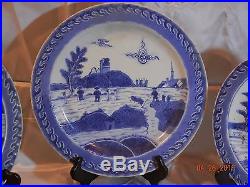
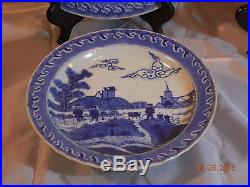
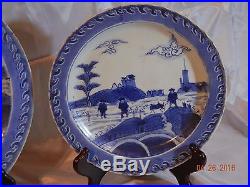
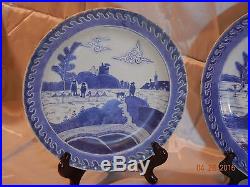
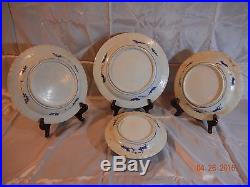
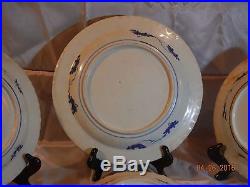
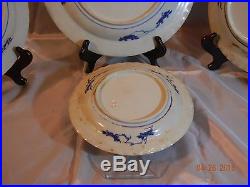
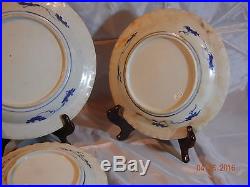
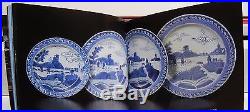
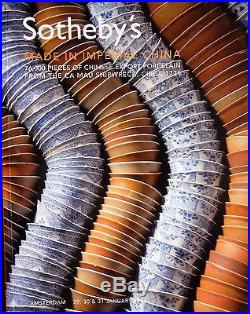

Enjoy a Touch of History and Culture. A more than 300 year-old, authentic antique. Museum Quality, Beauty, and Perfect.
We are offering a very rare, full 4-item-set of Deshima including a charger, and 3 plates. And authentic Ca Mau shipwrecked antique artifact.
His important Chinese ceramic is from the Kiangsi-Yongzheng reigns of the Qing (Ching) Dynasty period 17. The porcelain charger and plates are in underglaze blue and white decoration of "Deshima" pattern. This scene has also been referred to as Deshima Island, near Nagasaki, which was the VOC's headquarters the. United East Indian Company referred to by the British as the Dutch East India Company Verenigde Oost. Several examples of Van Frytom drawings for Delft pottery seem to have been used by the Japanese potters. This decoration seems to appear both on contemporary Chinese and Japanese porcelain. It is widely published as being of the Deshima Island in the Nagasaki harbor. A very beautiful, romantic scene, which would have appealed as much to early 18th Century Europeans as it does to us today. Please review images for further condition details. Should you need more images for review, please send a note. (Stands are used for displaying purpose, and are not included). The charger and the plates are of excellent conditions, glaze lustering, shinning. Foot Ring Diameter: 6 1/2 (17cm). All items are in excellent condition.Diameter: 10 1/2 (26.75cm). Foot Ring Diameter: 6 1/8 (15cm).
Diameter: 9 1/2 (24.25cm). Height: 1 1/8 (2.75cm). Foot Ring Diameter: 5 9/16 (14.25cm). Foot Ring Diameter: 4 3/8 (11.25cm). This set was exported from Jingdezhen (a Kiln in southern China) on the Ca Mau vessel, a Junk bound for the port of Jakarta, modern day Indonesia. The Junk, or large trade vessel, was capitalizing on the booming business of Chinese Export porcelain. The beginning of the 18th Century saw an insatiable appetite for Chinese ceramics sweep across most of Europe, with coffee and tea drinking a new and popular pass-time for the wealthy and middle-class alike.All the items we sell are original and authentic unless clearly indicated otherwise. We take great care to accurately describe the items. Good clear photos and close-ups of all details accompany all the descriptions. We clearly indicate all defects, replaced parts, non-original additions and/or later restorations to the extent we detect it.
If proved to us that we made a gross mistake in the definition, description or dating, or if the item found non-authentic and was not defined as such. After item is delivered, if it's not the same quality as what we described herein, please contact and inform us immediately. The offered item was from the private collection of Mr. Residing in San Diego, California USA. A retired scientist, and a member in the medical field; both are avid travelers throughout the USA, Asia, S.Their extensive collection ofAsian antiques, especially of Vietnamese origin artifacts were acquisited through the years. The offered item was collected/acquisited through out the years via various auctions and/or private sales events.
What was the Ca Mau shipwreck? Between 1723 and 1735, a Chinese junk sank off the coast of. S farthest point in the. Its cargo consisted of chinaware, porcelains, blue and white ware, porcelains decorated in brown, white-glazed porcelains over-glazed with enamels, and various stoneware, all originating from different kilns in southern China.
The best-known pieces are the porcelains from. Been produced since the fourteenth century; other notable pieces include those from the Dehua kiln complex in Hujian, and from.
The variety of the chinaware and the different kilns indicate that this vessel was part of the large Asiatic porcelain trade that developed in the early fifteenth century and in which the Portuguese and the Dutch played an important role. The shipwreck in the water of Ca Mau, the southern most city in. Was first discovered by fishermen in 1998. The excavations of the Ca Mau shipwreck have yielded fairly good condition artifacts. Coins with inscriptions of Kiangsi Thong Bao were also recovered. As the pieces still possess characteristics of Kiangsi period, it is generally held that the ceramics from the cargo were from late. This sunken treasure has lain on the seabed for over 300 years it has an incredible history and unlike many aged antiques, is very affordable for its age and uniqueness and can only grow in value over time. It was soon established that this was possibly a Chinese junk heading for the Dutch trading. And the reason for its sinking an intense fire on board. From the shapes and designs of the porcelain it was clear that the main part of the cargo was made for the European market. Enormous quantities were exported to meet the huge demand after porcelain became fashionable in Europe in the early 18th century and were transported from southern. In addition, all the artifacts found on board were Chinese, including stone seals and coins of the. All of the porcelain was made at. For centuries the main centre of porcelain making in. The dating of the porcelain could be further narrowed down to c. 1725 by the presence of other pieces of porcelain very much in the same style known to have been made in the latter part of the reign of the Emperor Kiangsi. We recommend collectors of Ca Mau antiques ceramics to add these following books to your library. Tàu Cô Cà Mau, The Ca Mau Shipwreck. Hanoi: Museum of Vietnamese History and Ca Mau Provincial Museum (2003), 258 pp.(96 pages of text, 386 photographs, and 21 pages of ceramics designs), Vietnamese and English. Howard and Ayers, China for the West , page 72, fig 33.
Special characteristics and rarity have created a higher demand for authentic antique ceramics. If youre happy with our service then please leave feedback for us - if not, please let us know as soon as possible.
The item "Ca Mau Shipwreck Blue & White Complete Deshima FULL SET Very Rare" is in sale since Wednesday, April 27, 2016. This item is in the category "Antiques\Asian Antiques\China\Plates". The seller is "vietartiques" and is located in Oceanside, California. This item can be shipped worldwide.
